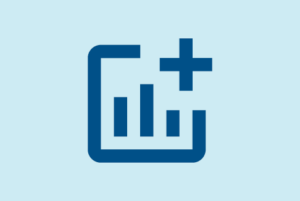The Centers for Medicare & Medicaid Services (CMS) has released its proposed rule updating the skilled-nursing facility (SNF) prospective payment system (PPS) for fiscal year (FY) 2022. Comments on the proposed rule are due by 2 p.m. (PT) on June 7.
CMS proposes a net 1.3% update to the SNF PPS that is estimated to increase Part A payments by $444 million relative to the prior year. CMS’ payment impact estimate does not incorporate the SNF value-based purchasing (VBP) program reductions, which are projected to be $191.64 million in FY 2022.
CMS proposes to suppress the SNF 30-day all-cause readmission measure for the FY 2022 SNF VBP program year and assign a performance score of zero to all participating SNFs. To comply with the payback percentage policy, CMS is proposing to reduce the otherwise applicable federal per diem rate for each SNF by 2% and award SNFs 60% of that withhold, resulting in a 1.2% payback percentage to those SNFs (except for SNFs subject to the low volume adjustment).
CMS’ data suggests that implementation of the patient driven payment model (PDPM) has increased payments by approximately 5% ($1.7 billion in FY 2022). In the rule CMS solicits comments on a potential methodology for recalibrating the PDPM parity adjustment that would account of the effects of COVID-19. It also seeks comments on whether any necessary adjustment should be delayed or phased-in to facilitate payment stability.
Recently passed legislation requires that certain blood clotting factors be excluded from the consolidated billing requirements under the SNF PPS for services furnished on or after Oct. 1, 2021. CMS proposes a proportional reduction in the Medicare Part A SNF rates to account for this, which is estimated to reduce Part A SNF spending by $1.2 million. CMS notes the reduction in Part A SNF spending is intended to offset the increase in Part B spending that will occur due to these items being excluded from consolidated billing.
The rule also proposes several changes to the SNF quality reporting program (QRP) and requests information on ways CMS can use policy solutions to address health equity:
- SNF Hospital-Acquired Infection Requiring Hospitalization Measure: Beginning with FY 2023 SNF QRP, CMS proposes adopting a new claims-based measure. The proposed SNF HAI measure uses fee-for-service claims data to estimate the rate of HAIs that are acquired during SNF care and result in hospitalization.
- Transfer of Health (TOH) Information to the Patient-Post Acute Care (PAC) Quality Measure: Currently, the measure denominators for both the TOH Information to the Patient-PAC and the TOH Information to the Provider-PAC measures include patients discharged home under the care of an organized home health service organization or hospice. To avoid counting the patient in both TOH measures, CMS is proposing to remove this location from the definition of the denominator for the TOH Information Patient-PAC measure.
- COVID-19 Vaccination Coverage: CMS is proposing the adoption of the COVID-19 Vaccination Coverage among Healthcare Personnel (HCP) Measure beginning with the FY 2023 SNF QRP.
- Request for Information on Addressing Health Equity: CMS seeks input on ways to attain health equity for all patients. Specifically, CMS requests comments on potential stratification of quality measure results by dual eligibility and other social risk factors in facility-specific reports, ways to improve demographic data collection, and the creation of a facility equity score to synthesize results across multiple measures and social risk factors.
Additional information is available in a CMS fact sheet.


